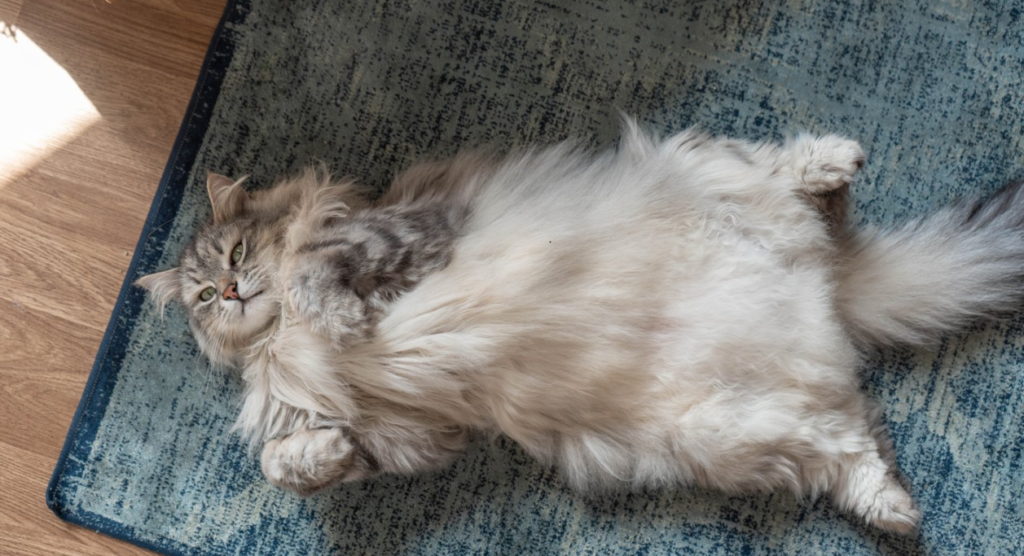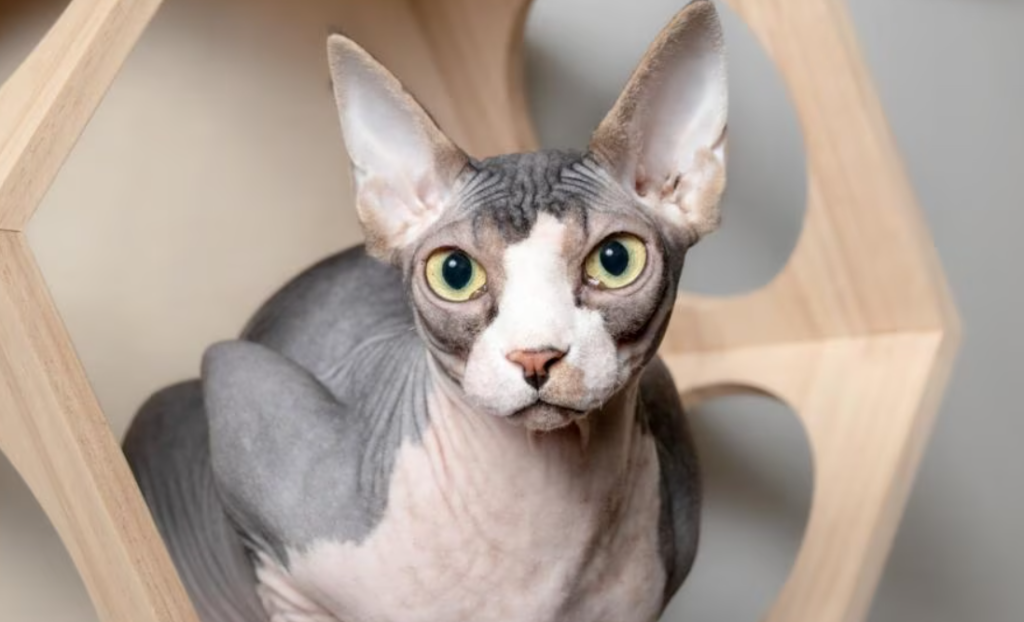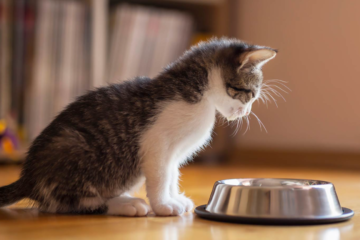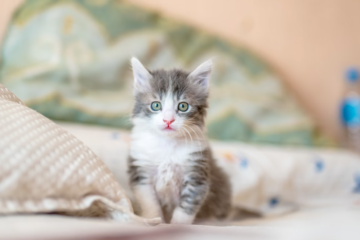Hypoallergenic Cat Breeds
Understanding Cat Allergies
Most people who have cat allergies aren’t allergic to a cat’s fur but rather the proteins in their saliva, urine, and dander (skin flakes). The primary protein responsible for cat allergies is Fel d 1, which cats produce in their saliva and skin glands. When cats groom themselves, the saliva containing Fel d 1 dries on their fur and skin, which then flakes off as dander and becomes airborne.
Reducing Allergens in Your Home
To manage cat allergies effectively, it’s crucial to focus on reducing these allergens in your living environment. Here are some strategies to help minimize exposure to cat allergens:
Consistent Cleaning required if you have Hypoallergenic Cat Breeds
- Vacuuming: Use a vacuum cleaner with a HEPA filter to capture dander and prevent it from being recirculated in the air.
- Dusting: Regularly dust surfaces with a damp cloth to capture dander rather than just dispersing it into the air.
- Laundry: Wash bedding, curtains, and any fabric items where your cat spends time. Use hot water to effectively remove allergens.
Air Quality Improvement
- Air Purifiers: Place HEPA air purifiers in rooms where your cat frequently spends time. These can help remove airborne allergens.
- Ventilation: Keep windows open when possible to allow fresh air to circulate and reduce the concentration of allergens.
Grooming Your Cat
- Regular Brushing: Brush your cat frequently to remove loose fur and dander. Doing this outside can help prevent allergens from spreading indoors.
- Bathing: Bathing your cat occasionally can help reduce the amount of saliva and dander on their fur. Use a cat-safe shampoo and consult with your vet on how often it’s appropriate to bathe your specific breed.

Personal Hygiene
- Hand Washing: Wash your hands after petting or playing with your cat to avoid transferring allergens to your face or other surfaces.
- Face Contact: Avoid touching your face, especially your eyes, nose, and mouth, after handling your cat, as this can lead to an allergic reaction.
Home Environment
- Designated Cat-Free Zones: Create specific areas in your home where your cat is not allowed, such as your bedroom. This can provide a safe space where you can be free from allergens.
- Furniture Choices: Opt for leather or vinyl furniture, which is easier to clean than fabric upholstery that can trap dander.
Even with hypoallergenic cat breeds, it’s important to maintain a clean environment, as they can still produce some allergens. The following breeds are known to produce fewer allergens:
By implementing these strategies and maintaining a clean living environment, you can significantly reduce the presence of cat allergens and enjoy the companionship of your feline friend with fewer allergic reactions.
All 8 Hypoallergenic Cat Breeds
Hypoallergenic cat breeds are less likely to cause allergic reactions. Here are some notable breeds along with their descriptions, characteristics, habits, and tips on how to manage hypoallergenic concerns.
1. Siberian
1. Siberian
- Description: Siberian cats have semi-long fur, a dense triple coat, and come in various colors.
- Characteristics: These cats are affectionate, intelligent, and playful.
- Habits: They are known for their friendly demeanor and love for climbing.
- Hypoallergenic Properties: Siberians produce fewer Fel d 1 proteins, a common allergen.
- Protection Tips: Regular grooming to reduce shedding and allergen spread.

2. Balinese

- Description: Balinese cats have long, silky fur and a slender body, similar to Siamese cats but with longer coats.
- Characteristics: They are social, vocal, and intelligent.
- Habits: They enjoy interactive play and are very affectionate towards their owners.
- Hypoallergenic Properties: They produce less Fel d 1 protein than other cats.
- Protection Tips: Frequent grooming and bathing can help minimize allergens.
3. Oriental Shorthair

- Description: These cats have a sleek, muscular body with short, fine fur.
- Characteristics: Orientals are energetic, curious, and social.
- Habits: They love being around people and can be quite vocal.
- Hypoallergenic Properties: Their short coat reduces the amount of dander.
- Protection Tips: Regular brushing and cleaning their environment help control allergens.
4. Devon Rex

- Description: Devon Rex cats have a unique appearance with short, wavy fur and large ears.
- Characteristics: They are playful, affectionate, and often described as dog-like.
- Habits: They enjoy interactive play and climbing.
- Hypoallergenic Properties: Their short, curly fur reduces shedding.
- Protection Tips: Regular bathing to remove allergens from their coat.
5. Cornish Rex

- Description: Cornish Rex cats have a soft, wavy coat and a slender, athletic build.
- Characteristics: They are active, sociable, and enjoy playing.
- Habits: They are known for their playful and affectionate nature.
- Hypoallergenic Properties: They have a unique coat that sheds less.
- Protection Tips: Regular grooming and bathing to minimize allergens.
6. Russian Blue

- Description: Russian Blue cats have short, dense, bluish-gray fur and bright green eyes.
- Characteristics: They are gentle, intelligent, and reserved.
- Habits: They are known for being quiet and loyal to their owners.
- Hypoallergenic Properties: They produce lower levels of Fel d 1 protein.
- Protection Tips: Regular brushing and keeping their environment clean.
7. Bengal

- Description: Bengals have a distinctive wild appearance with a sleek, muscular body and spotted or marbled coat.
- Characteristics: They are active, intelligent, and playful.
- Habits: They love to climb and play in water.
- Hypoallergenic Properties: They produce less dander due to their short coat.
- Protection Tips: Regular grooming and keeping their environment clean can help reduce allergens.
8. Sphynx

- Description: Sphynx cats are hairless with a wrinkled skin and large ears.
- Characteristics: They are affectionate, social, and energetic.
- Habits: They enjoy warmth and human interaction.
- Hypoallergenic Properties: Lack of fur reduces dander spread.
- Protection Tips: Regular bathing to remove oils and allergens from the skin.
Tips to Manage Hypoallergenic Cat Breeds | Concerns
- Regular Grooming: Brush your cat frequently to remove loose fur and dander.
- Bathing: Regular baths can help reduce the amount of allergens on your cat’s skin and fur.
- Clean Environment: Keep your home clean by vacuuming regularly and using air purifiers to reduce airborne allergens.
- Wash Hands: Wash your hands after petting or playing with your cat to minimize the spread of allergens.
- Allergy-Friendly Areas: Create designated areas in your home that are off-limits to your cat, such as your bedroom, to reduce exposure to allergens.
- Medication: Consult with an allergist for possible medications or treatments to help manage your allergies.
Specific Tips for Hypoallergenic Cat Breeds
- Siberians: Regular grooming to manage their dense triple coat.
- Balinese: Frequent grooming and occasional bathing to keep their silky fur allergen-free.
- Oriental Shorthairs: Regular brushing to reduce dander.
- Devon Rex: Routine bathing to manage their short, curly fur.
- Cornish Rex: Regular grooming due to their unique wavy coat.
- Russian Blue: Consistent brushing to maintain their short, dense fur.
- Bengals: Regular grooming to manage their short coat.
- Sphynx: Routine bathing to remove oils and allergens from their skin.
By choosing hypoallergenic cat breeds and following these tips, you can enjoy the companionship of a cat while minimizing allergic reactions.
Life Stages of Cats | Cute cat Wallpaper | Hypoallergenic Cat Breeds


